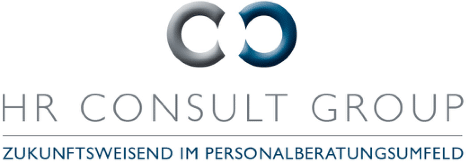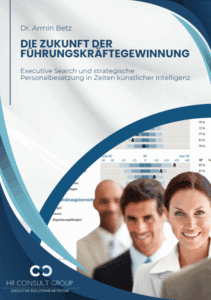Many aptitude diagnostics methods currently available on the market only determine absolute values of candidates' personality traits and in most cases, if at all, can only reflect these against a demographic group. The test result is therefore only meaningful to a limited extent. The absolute result of a personality trait does not say whether this value is good or bad. Only in comparison with candidates from the same occupational group can a statement be made about the quality of the characteristic.
An example of this is the problem of relation. Here is an example: In the high jump, the question is how high the bar is. However, the height alone is of little significance. This is because the jump only becomes interesting when the height is set in relation to the other high jumpers. What can be very good for academic performance is not competitive at the Olympics.
Figures such as 80%, which are still sometimes used in aptitude assessment procedures, are irrelevant because they are not set in relation to a comparison group. Only the comparison with a group or best group allows a statement to be made as to whether a value is to be classified as good or bad.
The system of aptitude diagnostics developed by the HR Consult Group involves mirroring the candidate against one of currently 115 standard and best-practice profiles of people operating successfully on the market. This enables the assessors not only to compare the proposed candidates directly, but also to mirror them against a much larger group of successful candidates on the market. This explicitly visualizes development potential as well as personal strengths in relation to the specific occupational group.
If a candidate's result value lands within the colored bandwidth, as shown in the example (see figure: Deviation of the candidate from the comparison group), the candidate is within the comparison profile. If the result is lower, i.e. to the left of the variance of the comparison group, the candidate has a clearly different assessment of this characteristic than the comparison group. If the candidate's result is to the right of the colored bandwidth, they consider themselves to be stronger than the comparison group on this point, which generally does indeed reflect a strength. The percentages shown on the far right indicate the exact values of the average of the comparison group, the candidate's value and the delta calculated from this, i.e. the exact deviation from the average of the comparison group.

Such standard and best practice profiles do not exist per se, but must be generated from the test inventory. It must therefore be ensured that sufficient tests are available to be able to create such norm and best practice profiles. For example, if a candidate is to be matched against the position of a sales manager, there must be enough test results from sales managers to be able to create a norm or best practice profile from these, which serves as a reference for comparison with the candidate profile.
The norm or best-practice profile is the average value including standard deviation of all test results per characteristic in relation to this specific group. In order to form these groups, however, more data about the candidate must be collected than is the case with most test procedures. Only knowledge of the candidate's general data, such as current position, current salary, with or without employee responsibility, etc., as well as personal information, makes it possible to form corresponding groups. This allocation is unique, i.e. the candidate can only belong to one of these groups. This means that all relevant tests can be filtered from the entire database and a standard and best-practice profile can be created.
A standard and best-practice profile is used for comparison. Based on the comparison, conclusions can be drawn on the positioning of the candidate in the individual personality traits and possible areas of development and potential can be uncovered and exploited by means of personnel development.
The Best Practice Profile (BPP) is a standard profile of the best. It is created by applying an additional filter. From these tests, the best 10 - 20 % are selected according to previously defined benchmarks and combined into a separate group.
The creation of a best practice profile is best explained using the example of a car salesperson. This is based on certain criteria that are used to select the participants used for best practice profiles. The selection criteria are varied and must be adapted and applied to each individual example. In this case, the top 10% of salespeople in terms of margin achieved and cars sold by a car manufacturer were selected as the relevant test group. The BPP created showed how the best salespeople of a car manufacturer are "knitted" and which characteristics are particularly necessary and beneficial for success in this job profile.
To verify this, the best salespeople from another car manufacturer were tested and it turned out that the two best-practice profiles were extremely similar.
It was particularly surprising that characteristics emerged across all participants for which the absolute values were virtually identical and there was virtually no spread in the candidates' answers. We would like to go into more detail on how this phenomenon should be evaluated in the next article.
The next article in this series will focus on key criteria. What are key criteria actually? And how are key criteria defined?
About the author

After studying automotive engineering and industrial engineering, he began his professional career in the automotive industry in the areas of sales, development and marketing and also spent a year in Japan with one of the largest automotive suppliers.
He then moved to a globally renowned premium car manufacturer, where he was responsible for product marketing in Japan and South America and for marketing strategy in North and South America.
In 1994, he decided to become self-employed and founded a personnel consultancy in Munich, where he has been driving development and expansion for over 20 years. As Managing Director, his industry focus is naturally on the automotive world as well as mechanical and plant engineering.
His doctorate in the field of aptitude diagnostics ideally rounds off his areas of expertise, particularly with regard to personnel and management consulting. The dissertation deals with the identification and verification of typical personality traits of engineers as well as the definition of development areas for a successful professional career.
These are scientifically derived and presented in the book "Eignungsdiagnostik im Praxiseinsatz".
At the same time, his focus is on the development of networks and cooperation models as well as the continuous further development of systems and processes in personnel consulting.
Over the last 20 years in personnel consulting, he has developed several brands that are still operating successfully on the market today.



